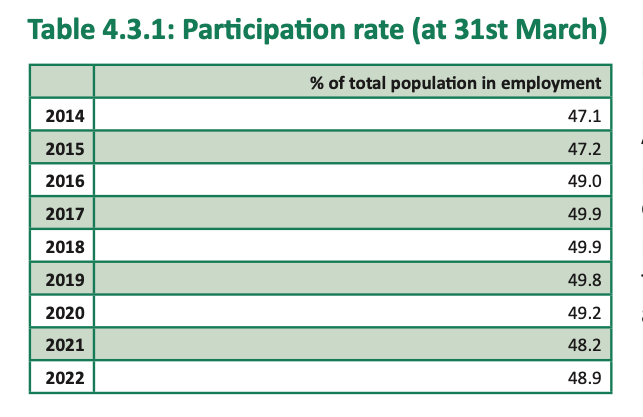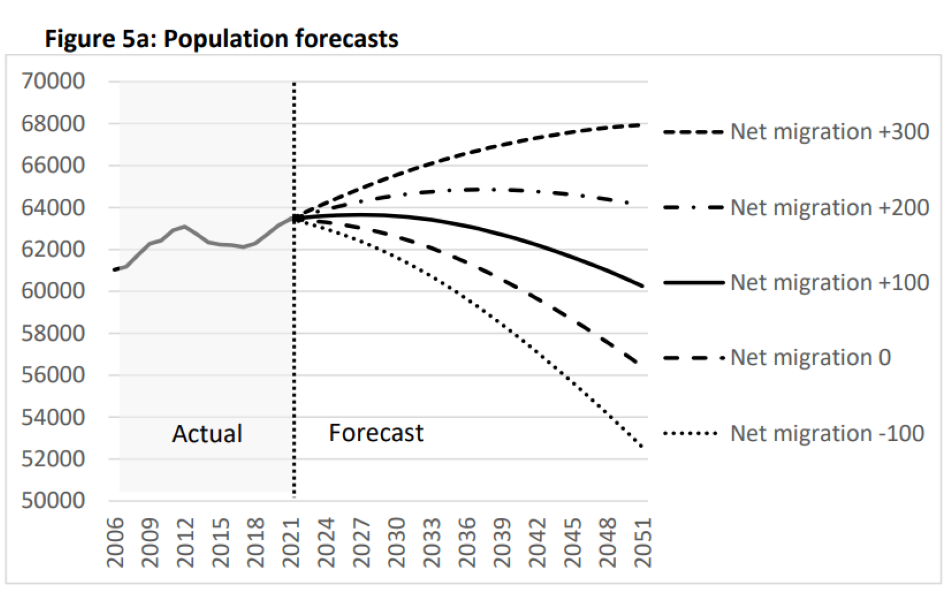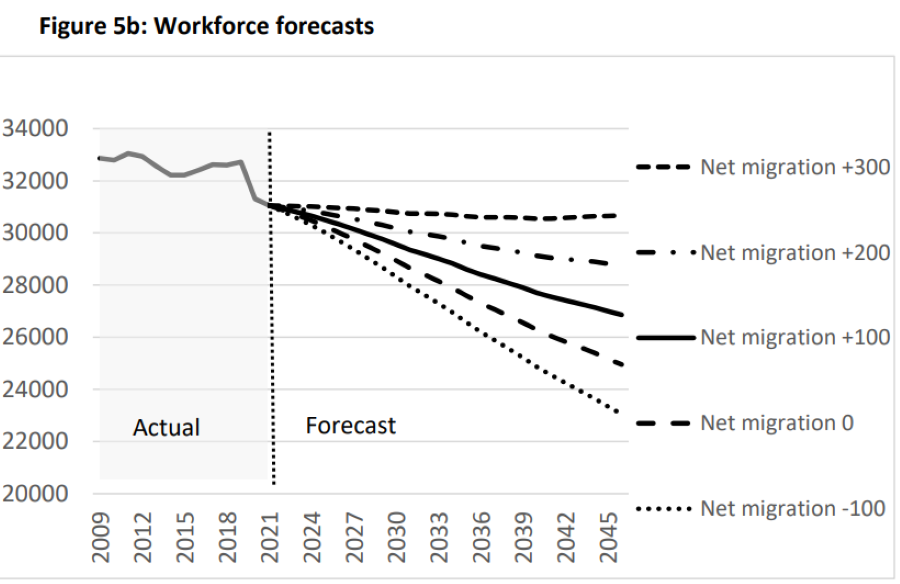


Official statistics for Guernsey's 2022 population showed there was a net migration of 491 people - which is over and above the +300 we've been told the island needs to maintain the size of the workforce.
The population was at 63,711 at the end of last March according to the rolling electronic census which collates data from different registers including registered births and deaths and income tax returns.
The net migration of +491 people was the highest Guernsey has seen for more than a decade.
Of the 63,711 people living in Guernsey last year, there was a very small increase in those aged between 16 and 64 - seen as the workforce.
83% of all people in that age group were in full time education or employment/self employment. 78% of people across all age groups were also in education or employment with 48.9% of all age groups in employment.

Pictured: Guernsey's workforce as a percentage of the population.
In October of last year, the States backed a new policy for population growth to maintain the size of the workforce by encouraging a higher level of inward migration into the island.
The strategic population policy assumes that net inward migration – the number arriving in the island minus the number leaving – would now average 300 people per year. It had previously averaged only 100 a year for the previous 12 years.
The Committee for Home Affairs said its plan to treble net inward migration would maintain the working-age population at around 31,000 and increase the total population by approximately 4,000 to around 68,000 by the year 2051.
The latest statistics - published last week - showed Guernsey's working age population at the end of September last year was 31,196 which was 10% higher than the previous autumn.

Pictured: This chart, published by the Committee for Home Affairs in October, indicated how different levels of net inward migration alter the total size of the island's population.

Pictured: This chart, published by the Home. Affairs Committee, shows how different levels of net inward migration alter the size of the island's workforce.
The States also backed other proposals from the Committee which will support the new headline population policy.
These include a plan for more jobs to attract short-term employment permits for workers from around the world. And scrapping five-year employment permits in favour of issuing more long-term employment permits which allow people to remain in the island indefinitely.
Although the States overwhelmingly backed the Committee’s policy letter, they also supported three amendments laid by other deputies.
The Committee for the Environment & Infrastructure was directed to report to the States on the investment necessary in the island’s infrastructure to support population growth.
The Policy & Resources Committee was directed to coordinate an investigation into increasing the proportion of local residents in the workforce and boosting their economic output.
And the Policy & Resources Committee and Committee for Health & Social Care were directed to investigate whether private health insurance should be made compulsory to limit the States’ healthcare costs as the size of the population increases.
The States also agreed that their successors in the next Assembly should review the island's population policies.

Pictured: The States changed their population policy in October in response to changes in the demographic profile of the island - specifically an increase in the proportion of elderly people.
The Committee advised against seeing population growth as a way of avoiding tax increases to fill the States' projected annual shortfall of up to £85million a year.
"Allowing for both the impact on revenue and expenditure of a larger population, high-level initial analysis has found that +300 [net inward migration] may only reduce the net revenue requirement by between £14m and £23m per year by 2040," said the Committee at the time.
"This is a relatively modest sum and highlights the fact that maintaining the size of the workforce, on its own, will not suffice in responding to the island’s financial needs."
READ MORE...
Increased population could demand compulsory health insurance
Less need for population growth if more local residents worked
Population growth plan faces challenge in States next week
P&R has "no agreed position" on key population growth plan
Home Affairs plan for more immigration to boost workforce
Highest number of over 65s since records began
Population review to consider "changing economic needs" after covid
Comments
Comments on this story express the views of the commentator only, not Bailiwick Publishing. We are unable to guarantee the accuracy of any of those comments.